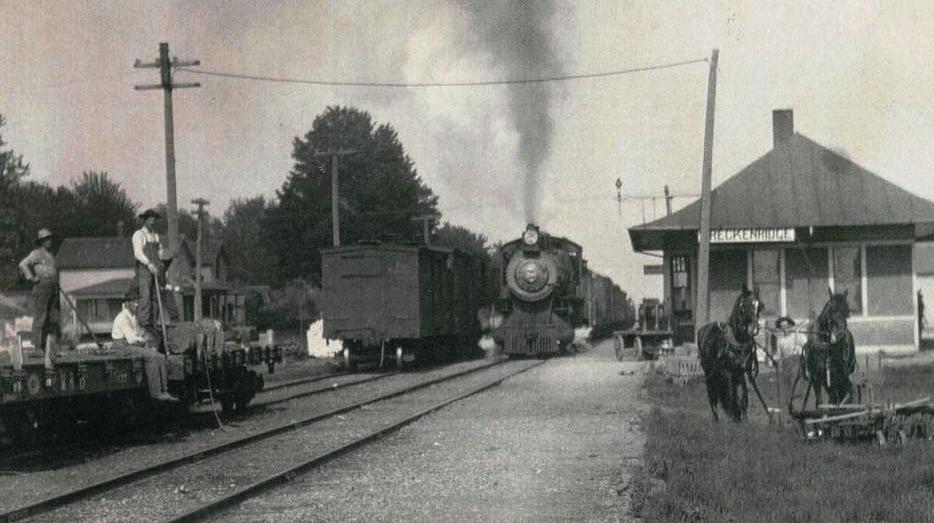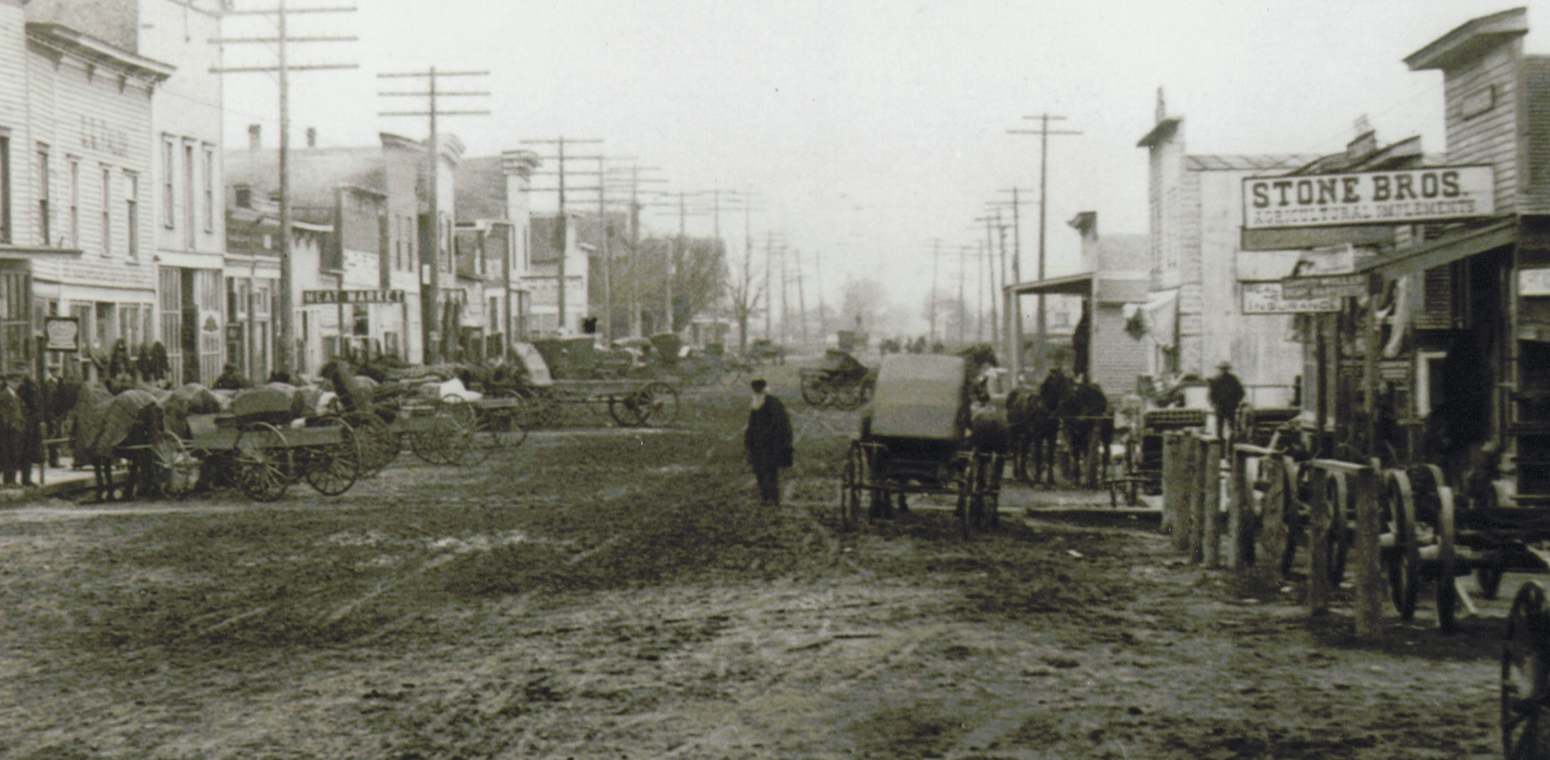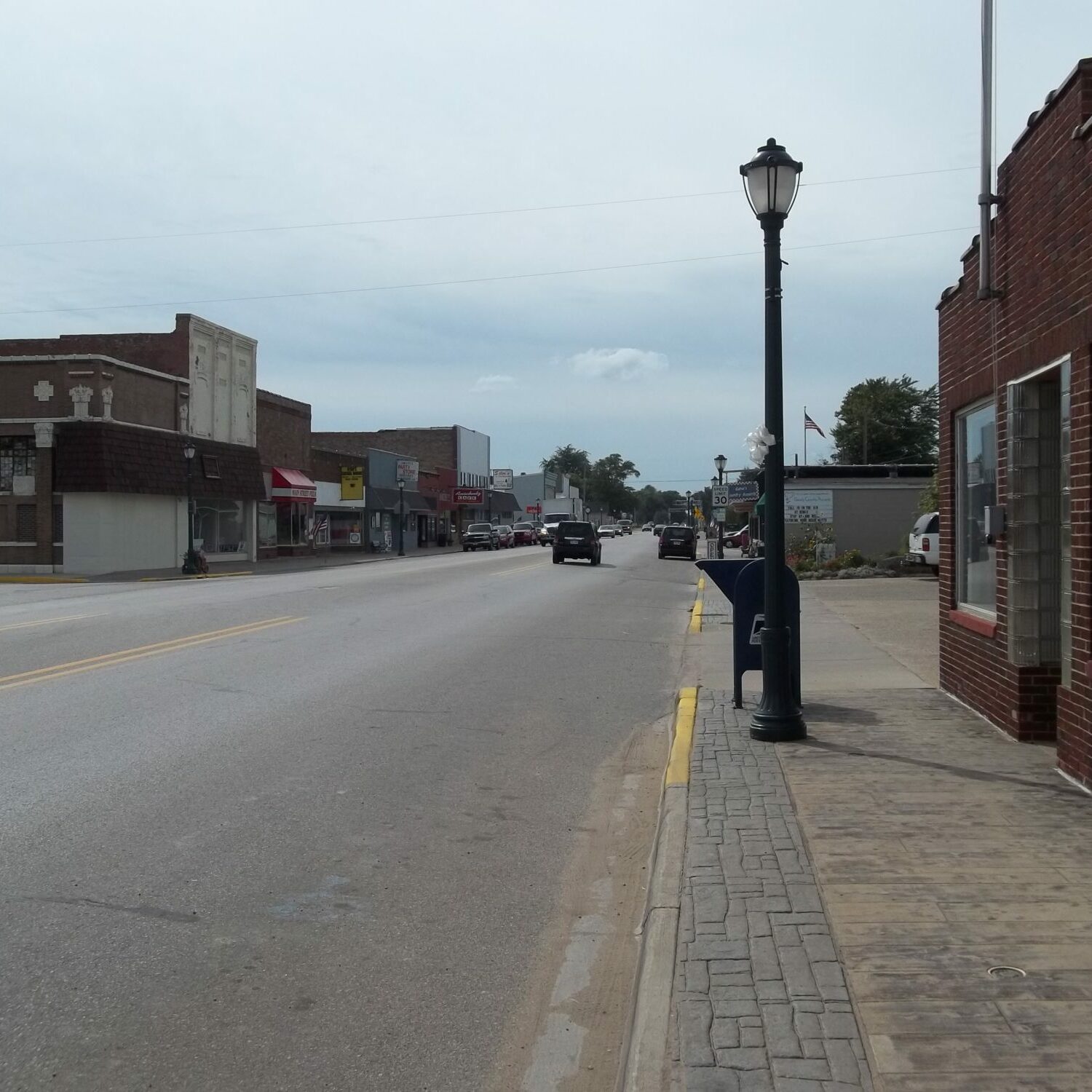The Village of Breckenridge History
In 1860 Charles Howd made the first move toward conquering the wilderness where the Village of Breckenridge now stands. He claimed 240 acres in Section 30 of Wheeler Township, part of which later made up the southeast portion of the Village. However it was ten years before he occupied it permanently. When the railroad came in 1872, he carved out a generous patch of his 240 acres to create the south side of town, took up permanent residence and established a general store. Daniel W. and Justin A. Breckenridge bought land near Charles and started a saw mill. Justin surveyed a strip of his homestead land and gave it as a right-of-way for the railroad bed. Daniel donated plots of ground for a school site, and for the Congregational and Methodist churches.
The Saginaw Valley & St. Louis Railroad which found its way into Gratiot County from the east in 1872 did much to help the township and Village out of the wilderness. The railroad company, deeming the spot about the proper place for a station, gave the future town an assured start. The railroad furnished the means for disposing of the timber which constituted the main asset of the surrounding country, and the station soon became a great shipping point for the forest products- hoops, staves, lumber, square timber and logs. Later Sam Brown took up the land now constituting the northwest part of the Village. James and D. D. Brooks were the pioneers of the southwest part of the Village. Settlers came, various business enterprises were established and improvements continued.


Among the early business establishments was a blacksmith shop owned by Ed Smith and a hoop factory operated by L. H. Town and Warren Crandell. In the 1870’s a stave mill was established by two gentlemen named Hood and Peterman. A sawmill and oar factory built by Braddock and Son of Portsmouth in Bay County made carloads of oars from white ash and shipped them to New England. The company did a thriving business for a long period of time. It was later reorganized, with the elder Braddock leaving the company. The company now consisted of Arthur Braddock, Charles H. Howd and Hiram Sexton. After doing a profitable business, they sold the company to Ladue and Penney of Saginaw. Unfortunately on the morning of March 16, 1879, the factory burned, it was a total loss and there was no insurance protection. It was presumed to have been an incendiary fire.
The Travers Brothers established a hoop factory in the winter of 1883-84 and operated it for several years. As the lumber was cut and the land cleared, these factories and lumber mills moved to other locations where lumber was still plentiful. In their place came farming as a growing factor in the economic life and by 1900 the sugar beet industry had begun its growth with several factories in the area. A new interest was added to the community with the organization of the Breckenridge Auction & Sales Co. For more than a quarter of a century the livestock auction made the Village an important outlet for the stock raised in Central Michigan.
Through the years large agricultural elevators were raised and enlarged to handle the harvested crops from the farms surrounding Breckenridge. One of the most significant moves was the purchase of the Breckenridge Bean and Grain Company by a group of area farmers. Crawford and Company as it was known prior to 1924 had served the area for over a half a century. The new business formed by the farmers, the Breckenridge & Wheeler Co-op (B & W Co-op) enjoyed phenomenal growth from 75,000 bushels of storage at the purchase in 1947 to over 8,500,000 bushels when the Co-op was broken up and sold in 2001. B & W had been a major player in agricultural service and supply in the State of Michigan as well as a significant dealer in domestic and international grain and edible bean markets for over forty years.
On May 19, 1873, a post office was established at Breckenridge, with Charles Howd as its first postmaster. The original plat of Breckenridge was surveyed by S. S. Hastings for Daniel and Mary Breckenridge on May 4, 1874. It contained about 50 acres. Saginaw Street (M-46) still the main business street is the south line of that track of land. A petition from the citizens of Breckenridge, asking to be incorporated as a village, was received on October 14, 1907 by the County Board of Supervisors. Because of a rather vigorous protest received at that meeting no action was taken. In January of 1908, a special committee of the board reported in favor of the petition and it was adopted by the board.
The first election was held at the Opera House on April 9, 1908. There were 131 voters. Alfred F. Crawford was elected President. Three two-year trustees, three one-year trustees, a clerk, a treasurer and an assessor were also elected. Today, the Village population is 1,339. Residents enjoy a modernized water system, which was installed through the help of the Works Progress Association in 1937, using a deep well, a pump and a water storage tank. Today the entire water output is softened in a municipal treatment plant that was built in 1954. Since 1954 a new 200,000 gallon water tower has been built and several other updates and services have been added to improve the system. The first sewer system was installed in Breckenridge in 1915. Today the system consists of a collection system, two pumping stations and two 6 acre waste stabilization lagoons, located north of the Village. Around 1882, a two-room school was built at the north end of Eastman Street.
Breckenridge has enjoyed the benefits of a graded school since 1893. That is the same year that Breckenridge High School graduated its first class. Five students received diplomas. In 1916 a new building was erected to house the senior high pupils. It contained class rooms and a gymnasium. Then in 1948 a bond issue allowed the building of more classrooms. Construction was finished in 1950 on a shop-agricultural building. In 1952 another addition was completed. In 1959 the elementary school was built. A new Junior-Senior High School was built in 1966. The Elementary school was expanded and a Middle School wing was added to the high school in 1995.
The Breckenridge-Wheeler Township Fire and Rescue Department services all of the Village of Breckenridge, Wheeler Township and a number of other townships. The department is governed by a board made up of two Village representatives, two township representatives and a member-at-large. The ownership is divided on a 60-40 basis, with the Village being the 40% partner. The department has six modern fire trucks and a new rescue vehicle. The Breckenridge Police department has the Chief plus two part time officers and two auxiliary officers. The department has two patrol vehicles. Their office is located in the Village office.

